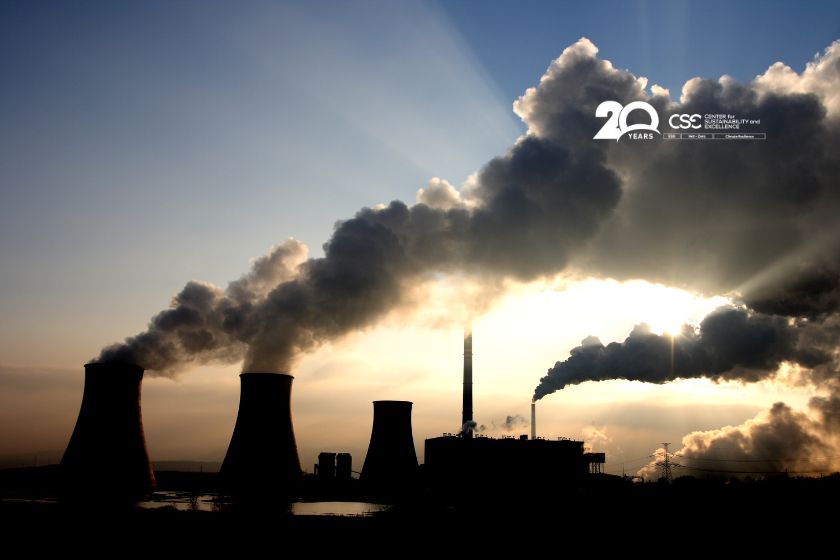Canada stands at a pivotal moment in its energy and climate journey. As one of the world’s top energy exporters — with vast oil sands, natural gas reserves, and major infrastructure projects — the country also faces mounting pressure to uphold its commitment to net-zero emissions by 2050 under the Paris Agreement.
This tension between economic reliance on fossil fuels and urgent climate targets is more than just political — it poses material risks and strategic challenges for businesses, investors, and policymakers alike.
Fossil Fuel Growth in a Net-Zero Context
The oil and gas sector represents nearly 5% of Canada’s GDP and supports over 500,000 direct and indirect jobs, particularly in Alberta, Saskatchewan, and Newfoundland and Labrador.
Massive investments in LNG terminals (e.g., LNG Canada project), pipeline expansions (like the Trans Mountain Expansion), and exploration reflect confidence in the sector’s short- to medium-term demand.
“Increasing Canada’s energy ambition is an economic and geopolitical imperative,” says Peter Tertzakian, energy economist and founder of ARC Energy Research Institute.
According to the International Energy Agency (IEA), Canada can reach its 30% by 2030 target by protecting its prime biodiversity areas without significantly hindering the wind and solar development needed to reach its net zero targets.
Oil and gas production represents one third of Canada’s emissions, and one twentieth of the GDP according to Pembina Institute. If the world achieves its pledge of net-zero by 2050, global oil demand will fall and Canadian crude oil production will enter into long-term decline in the 2030s, ultimately falling by 80% by 2050. (Data source: Canada Energy Regulator; see Meeting the emissions cap (2024))
Climate Commitments Under Pressure
Canada has legislated climate action through the Canadian Net-Zero Emissions Accountability Act, targeting a 40–45% reduction in GHG emissions from 2005 levels by 2030.
However, a 2024 report from the Commissioner of the Environment and Sustainable Development indicates that Canada is making progress toward its 2030 climate / emissions targets, but it looks likely to fall short unless policies are greatly accelerated and strengthened.
New regulations and frameworks, such as the Canadian Sustainability Standards Board (CSSB) and Net-Zero Emissions Accountability Act, are tightening expectations on emissions reporting, carbon intensity, and transition planning.
ESG Performance and Investment Risk
The inconsistency between fossil fuel expansion and climate commitments is already influencing ESG ratings, financial risk assessments, and investor appetite.
According to MSCI, Canadian companies are increasingly filtered through ESG-focused indices such as the MSCI Canada Selection Index, which excludes firms with low ESG ratings or exposure to major controversies. This approach underscores how access to global capital is now directly tied to credible ESG performance, putting additional pressure on fossil fuel companies to adopt transparent transition strategies.
On the bright side, in 2024, Canada climbed to 8th place globally with $35 billion in clean energy investments. This milestone highlights the nation’s renewed commitment to sustainability and serves as a powerful example of how countries can recover after years of lagging behind. With consistent policy direction and strong investment signals, Canada is proving that clean energy is not only an environmental necessity but also a catalyst for long-term economic growth.
The Role of ESG Strategy in Bridging the Gap
Canadian companies don’t need to choose between economic growth and climate responsibility. Instead, they must craft ESG strategies that reconcile both. Key actions include:
- Engaging stakeholders (regulators, investors, Indigenous communities) to identify material climate risks.
- Implementing the Greenhouse Gas Protocol, TCFD, and Science Based Targets initiative (SBTi).
- Investing in clean energy, carbon capture, and circular economy
- Providing transparent, auditable climate disclosures to avoid greenwashing and regulatory backlash.
Case in Point: As reported by CBC News, oilsands producer Cenovus Energy announced in January 2020 that it was “aiming to achieve net zero greenhouse gas emissions by 2050 — and reclaim hundreds of decommissioned well sites” as part of its new sustainability targets.
Canada’s energy future is no longer about choosing sides — it’s about navigating complexity with clarity. While fossil fuels remain economically significant, climate accountability is now a baseline expectation from investors, consumers, and regulators alike.
Businesses that lead with science, strategy, and transparency will be best positioned to weather the transition and seize the new opportunities emerging from the sustainable economy.
Building ESG Capacity in Canada
For professionals and organizations seeking to navigate the energy transition effectively, specialized training can be a valuable asset. The Canada Certified Sustainability (ESG) Practitioner Program – Leadership Edition offers a structured pathway to develop practical expertise in ESG strategy, risk management, and reporting aligned with global standards such as GRI, SASB, TCFD, and ESRS.
Participants explore how to:
- Build climate-resilient strategies across their value chains.
- Identify and manage ESG risks and opportunities.
- Align organizational goals with international sustainability frameworks.
This program has been adopted by professionals from leading Canadian institutions, including the National Research Council Canada, Sun Life, and Parkland Corporation — reflecting a growing demand for practical, implementation-focused ESG knowledge.
For those looking to deepen their sustainability impact, this program offers a credible route to gaining the tools and perspective needed to lead through transition.







